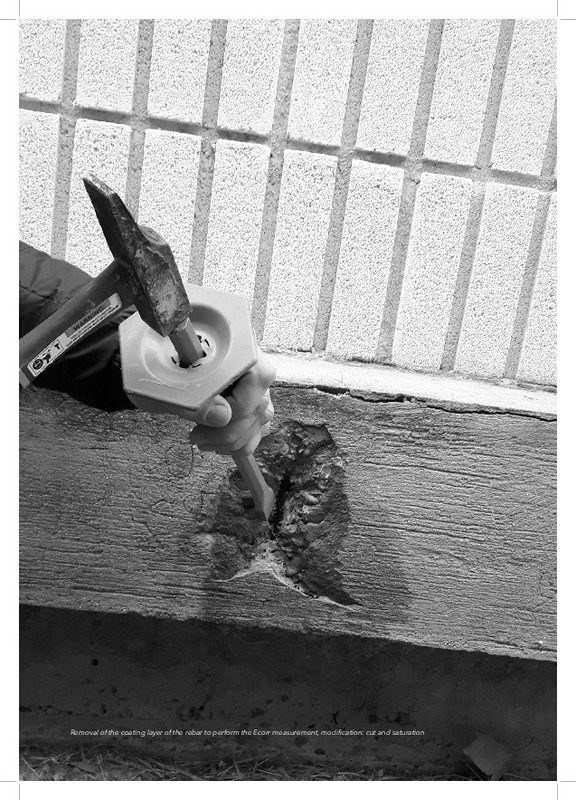JavaScript is disabled for your browser. Some features of this site may not work without it.
Buscar en RiuNet
Listar
Mi cuenta
Estadísticas
Ayuda RiuNet
Admin. UPV
Integrated sensor network for monitoring steel corrosion in concrete structures
Mostrar el registro sencillo del ítem
Ficheros en el ítem
| dc.contributor.author | Ramón Zamora, José Enrique
|
es_ES |
| dc.contributor.author | Gandía Romero, José Manuel
|
es_ES |
| dc.contributor.author | Valcuende Payá, Manuel Octavio
|
es_ES |
| dc.contributor.author | Bataller Prats, Román
|
es_ES |
| dc.date.accessioned | 2016-09-13T07:31:47Z | |
| dc.date.available | 2016-09-13T07:31:47Z | |
| dc.date.issued | 2016-06-21 | |
| dc.identifier.uri | http://hdl.handle.net/10251/69316 | |
| dc.description.abstract | [EN] Corrosion is one of the main triggering factors affecting the service life and durability of structures. Several methods are used for corrosion studies but electrochemical techniques are the most commonly applied. Corrosion processes monitoring and control by means of non-destructive techniques, such as the implementation of embedded sensors, has been the target of many works. It is possible to obtain relevant information of structural corrosion processes in real time. This document describes a system including specific equipment and which allows obtaining relevant information about these corrosion processes. This system is formed by a sensor network. There are several types of electrodes, which are distributed throughout the structure under study and a specific equipment developed by the research group, which is used to determine pertinent parameters such as the corrosion potential (Ecorr) and the corrosion density (icorr) by applying sequences of potentiostatic pulses. The system allows to reliably determine the corrosion rate in different areas of the structure. The sensor, due to its configuration, provides information of a specific area of the structure, but on the other hand it is involved in the galvanic events that can occur along the structure by differential aeration, galvanic cells, etc. because the sensor is not isolated from the structure. This system also procures information of buried and submerged elements. Besides, it is possible to obtain information related to temperature, concrete resistance. The system includes specific potentiometric sensors to monitor chloride access and carbonatation processes. | es_ES |
| dc.description.sponsorship | The pre-doctoral scholarship was granted to Román Bataller Prats by the Research Staff Training Program, “Formación de Personal Investigador (FPI) 2012” from Universitat Politécnica de Valéncia and to José Enrique Ramón Zamora by the University Faculty Training Program FPU13/0091, “Formación del Profesorado Universitario (FPU) 2013” from the Spanish Ministry of Science and Innovation. ETSIE (UPV) by their support to the laboratory is also gratefully acknowledged. | |
| dc.language | Inglés | es_ES |
| dc.publisher | Universitat Politècnica de València | |
| dc.relation.ispartof | VITRUVIO - International Journal of Architectural Technology and Sustainability | |
| dc.rights | Reconocimiento - No comercial (by-nc) | es_ES |
| dc.subject | Sensor | es_ES |
| dc.subject | Corrosion | es_ES |
| dc.subject | Structure | es_ES |
| dc.subject | Steel | es_ES |
| dc.title | Integrated sensor network for monitoring steel corrosion in concrete structures | es_ES |
| dc.type | Artículo | es_ES |
| dc.date.updated | 2016-09-09T09:57:06Z | |
| dc.identifier.doi | 10.4995/vitruvio-ijats.2016.5191 | |
| dc.relation.projectID | info:eu-repo/grantAgreement/MECD//FPU13%2F00091/ES/FPU13%2F00091/ | |
| dc.rights.accessRights | Abierto | es_ES |
| dc.contributor.affiliation | Universitat Politècnica de València. Escuela Técnica Superior de Gestión en la Edificación - Escola Tècnica Superior de Gestió en l'Edificació | es_ES |
| dc.contributor.affiliation | Universitat Politècnica de València. Departamento de Construcciones Arquitectónicas - Departament de Construccions Arquitectòniques | es_ES |
| dc.contributor.affiliation | Universitat Politècnica de València. Escuela Técnica Superior de Arquitectura - Escola Tècnica Superior d'Arquitectura | es_ES |
| dc.description.bibliographicCitation | Ramón Zamora, JE.; Gandía Romero, JM.; Valcuende Payá, MO.; Bataller Prats, R. (2016). Integrated sensor network for monitoring steel corrosion in concrete structures. VITRUVIO - International Journal of Architectural Technology and Sustainability. 1(1):65-79. https://doi.org/10.4995/vitruvio-ijats.2016.5191 | es_ES |
| dc.description.accrualMethod | SWORD | es_ES |
| dc.relation.publisherversion | https://doi.org/10.4995/vitruvio-ijats.2016.5191 | es_ES |
| dc.description.upvformatpinicio | 65 | es_ES |
| dc.description.upvformatpfin | 79 | es_ES |
| dc.type.version | info:eu-repo/semantics/publishedVersion | es_ES |
| dc.description.volume | 1 | |
| dc.description.issue | 1 | |
| dc.identifier.eissn | 2444-9091 | |
| dc.contributor.funder | Universitat Politècnica de València | |
| dc.contributor.funder | Ministerio de Educación, Cultura y Deporte | es_ES |








